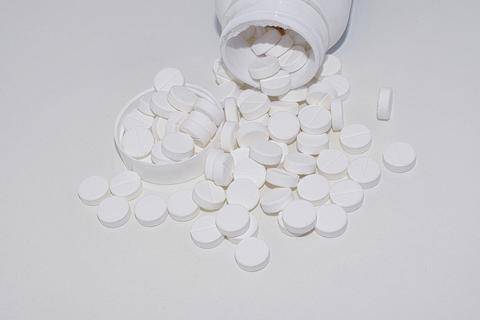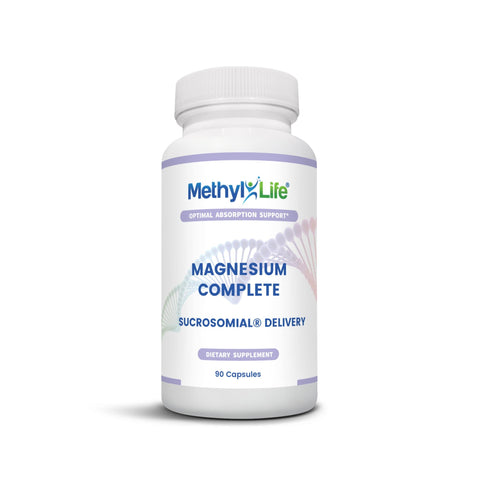Magnesium has been ubiquitously referred to as the miracle mineral. A quick search on google yields results such as, “Get back on task naturally, “ and “Energy support like no other.” So what’s all the hype really about?

Magnesium: The Miracle Mineral?
Product Recommendations
Magnesium Complete Sucrosomial® Delivery
Rating: 4.8 out of 5
(35)
$29.00
- Liposomal-Like Delivery for Superior Absorption
- 3rd-Party Tested for Purity, Potency & Safety
- 90 Vegan, Non-GMO, Gluten-Free Capsules
Updated On:
June 03, 2025What We Know About Magnesium
The human body needs adequate levels of magnesium to function properly. It is an essential mineral that promotes mitochondrial health (energy!), glucose metabolism, bone health, intestinal function, and more. Magnesium is a core component of the Earth’s crust and the fourth most abundant mineral in the human body. Additionally, this “miracle” mineral is essential for supporting more than three hundred enzymatic reactions at the cellular level.
How Do We Get Magnesium Anyway?
The answer is twofold. First, you need to be consuming a diet that is rich in whole, nutrient-dense foods and low in refined carbohydrates and processed sugars. There are various foods that contain high levels of magnesium.
Here is a list of some foods, in order of concentration:
- Cooked Spinach (1C = 157 mg)
- Swiss Chard (1C = 154 mg)
- Dark Chocolate (1 Square = 95 mg)
- Pumpkin Seed (1/8 Cup = 92 mg)
- Almond (1 C = 80 mg)
- Black Beans (1/2 Cup = 60 mg)
- Avocado (1 = 58 mg)
- Yogurt (1 C = 50 mg)
- Figs (1/2 Cup = 50 mg)
- Banana (1 = 32 mg)
I Thought You Said the Answer Was Twofold?
Here’s the bad news. Unfortunately, as our food and agricultural system has undergone some change for the worse, minerals like magnesium have been depleted from our soil. A study on cattle conducted over a span of eleven years (2002-2013) showed that over five hundred animals had a mineral deficiency.
What Does This Mean for Us?
Soil that is higher in organic matter and clay does a good job of retaining minerals (like magnesium) and passing those minerals through to the plants. Unfortunately, the soil is not the same as it used to be when our great-grandparents were growing up.
To make things harder, our grocery stores are now stocked with packaged, processed food in addition to highly-sprayed, genetically modified produce. Things like soil depletion, use of chemical-laden fertilizer, and processing of foods have made it harder for plants to retain their nutrients. Critical minerals are being stripped from the soil on a daily basis, which means that even foods that are known to have higher levels of magnesium may not always contain levels that are bioavailable to us.
What else can cause a magnesium deficiency?
Other risk factors for magnesium deficiency may vary, but some can include:
- Calcium supplementation (or prolonged use of calcium supplements) without magnesium supplementation
- Alcohol use
- Diets high in saturated fats and sugar
- High levels of stress
- Drinking water that is depleted of minerals (city water or soft water)
So, How Much Do I Need?
The new RDA ranges are shown below:
- 80 mg/day for children 1–3 year of age
- 130 mg/day for children 4–8 year of age
- 240 mg/day for males 9–13 year of age
- 420 mg/day for males 31–70 year of age and older
- 240 mg/day for females 9–13 year of age
- 360 mg/day for females 14–30 year of age
- 320 mg/day for females 31–70 year of age and older
If the deficiency in magnesium is unable to be corrected by dietary changes (absorption issues, leaky gut, among other conditions), magnesium supplementation is recommended and encouraged. Methyl-life® offers both pill form and powder form, based on your preference.

Product Recommendations
Magnesium Complete: Sucrosomial® Delivery
Rating: 4.8 out of 5
(35)
$29.00
- Liposomal-Like Delivery for Superior Absorption
- 3rd-Party Tested for Purity, Potency & Safety
- 90 Vegan, Non-GMO, Gluten-Free Capsules
References
-
Ursula Perdrizet, Barry Blakley, Ahmad Al Dissi; "Concentrations and deficiencies of minerals in cattle submitted to a diagnostic laboratory in Saskatchewan from 2003-2012: A retrospective study"; The Canadian veterinary journal; 2020 Jan
https://www.ncbi.nlm.nih.gov/pubmed/31892756
-
Uwe Gröber, Joachim Schmidt, Klaus Kisters; "Magnesium in Prevention and Therapy"; Nutrients; 2015 Sep
https://www.ncbi.nlm.nih.gov/pubmed/26404370
Related Articles

What is the Best Form of B12 for You?
Written By: Jamie Hope - Methyl-Life® Founder

Like what you read?
Please subscribe to get more content like this sent to your inbox.
Share This Article
Trusted by Experts. Backed by Science.
Trusted professionals crafting original content backed by verified research. Since 2012, Methyl-Life® has been dedicated to providing evidence-based education to help individuals better understand methylation and nutritional wellness.
-

Expert-authored education
Every article and guide is written or reviewed by professionals specializing in methylation science and nutritional biochemistry.
-

Research-verified information
Our content references peer-reviewed studies and verified data, ensuring accuracy, integrity, and real-world relevance.
-

Educational leadership since 2012
A founder-led team collaborating with clinicians, researchers, and health writers to make complex science accessible and actionable.
-

Transparent and trustworthy
All educational materials undergo internal review for scientific accuracy, compliance, and clarity before publication.
Blog Categories
Table of Contents
Product Recommendations
Magnesium Complete: Sucrosomial® Delivery
Rating: 4.8 out of 5
(35)
$29.00
STUDY PROVES MOST BIOAVAILABLE MAGNESIUM TYPE







